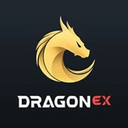
Review on EOS by Syed Adnan

If you're interested in the idea of EOS, it's important to understand that the…
If you're interested in the idea of EOS, it's important to understand that the EOS token that's being traded right now doesn't correlate in any direct way to the EOS dApp platform and blockchain that will, ultimately, be launched.
The currently-existing EOS token is an ERC-20 token – a token on the Ethereum blockchain – that was created for EOS's ICO. It doesn't – and can't – have any use on the EOS blockchain because it's not on an EOS blockchain, it's on the Ethereum chain.
However, the developers have said that the current EOS tokens will redeemable for tokens on the EOS blockchain once the EOS mainnet launches, which is expected to happen in June 2018. The expected rate of redemption is 1:1.
But it's worth pointing out that no redemption is guaranteed, and EOS's website clearly states that the tokens “do not have any rights, uses, purpose, attributes, functionalities or features, express or implied, including, without limitation, any uses, purpose, attributes, functionalities or features on the EOS Platform.”
Updated 6 years ago
Rating has not been changed
With its great scalability it can easily handle several million transactions per second. The net work bandwidth will depend directly on the number of coins centered on the container. The more tokens an investor earns, the more chance he will have to launch his application.
It has many competitors that are developing in the same direction. Tezos, Tauchain, Aeternity, and Quantum position themselves as a decentralized platform for launching applications quickly. If at least one of them fires, it will have little chance of success.
Pros
- EOS is a blockchain solution aimed at solving that problem by providing a dApp-friendly blockchain platform that scales easily and smoothly to handle any load. But there's more to it than just that: EOS aims to offer a platform that can handle millions of transactions per second with zero transaction fees.
Cons
- That's how EOS processes transactions more quickly than Ethereum. But EOS also uses this system to eliminate transaction fees – sort of. Instead of the typical per-transaction fee, users on the EOS network will be able to access network power proportionate to the EOS tokens they hold. If, for example, a dApp holds 1% of all existing EOS tokens, it can use up to 1% of the EOS network's total transactional power at any given time.












